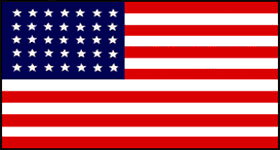 |
Civil War Battles |
|
State War Records |
| AL - AK - AZ - AR - CA - CO - CT - DE - FL - GA - HI - ID - IL - IN - IA - KS - KY - LA - MA - MD - ME - MI - MN - MS - MO - MT - NE - NV - NH - NJ - NM - NY - NC - ND - OH - OK - OR - PA - RI - SC - SD - TN - TX - UT - VT - VA - WA - WV - WI - WY |
The Battle of Campbell's Station
November 16, 1863 in Knox County, Tennessee
 |
|||||||||||||||||||
|
In early November, Gen. Braxton Bragg dispatched Lt. Gen. James Longstreet, with 2 infantry divisions and about 2 artillery battalions, from the Confederate Army of Tennessee near Chattanooga with a license to crush Maj. Gen. Ambrose E. Burnside's Union Department of the Ohio troops at Knoxville, Tennessee.
Longstreet sent Brig. Gen. Joseph Wheeler's cavalry ahead, probing the defenses of Knoxville, where Burnsides had his headquarters. On the 14th, the remaining Confederates marched northeast, up the Tennessee River banks, crossing the stream west of Louden on the East Tennessee & Georgia Railroad. On the same day, Burnside rushed southwest from Knoxville to evacuate Union troops from Louden, believing Longstreet's numbers overwhelmed his and that retreat to Knoxville's fortifications offered the only chance of survival.
On the 15th at 4:00 A.M., elements of the Union's IX and XXIII Corps, seperated from Longstreet's men by only 1 mile and a bend in the Tennessee River, headed northeast for Knoxville along the rail line. Longstreet's 12,000 infantry raced along a parallel route, the Hotchkiss Valley Road, until night, when both forces stopped near Lenoir. If Burnside lost the race to Knoxville, his force could be trapped outside the city's defenses with its back to the Holston River. Both he and Longstreet realized that the first to reach Campbell's Station, 10 miles ahead on the Kingston Road, might fend off or capture the other.
At 2:00 A.M. on the 16th, Federals and Confederates started off in a heavy rain for Campbell's Station. Col. John F. Hartranft's IX Corps were ordered to run ahead of the main Union column to Concord, on the rail line, and clear the Concord Road northeast to Campbell's Station. Longstreet did the same, dispatching South Carolina cavalry and an artillery battery forward on the Kingston Road to beat Hartranft to the town. Brig. Gen. Micah Jenkin's Confederate division veered from the main Kingston Road column and squeezed close to shadow Burnside's route. Two miles seperated the 2 main columns.
Rain and mud slowed both forces as they hauled wagons and artillery, but Longstreet had a slight lead. Burnside ordered wagons and extra artillery caissons abandoned. Under Col. William Humphrey, 3 Union regiments veered north, hit Jenkins' shadowing column, and skirmished northeast. The Union pace stepped up, and Burnside's troops inched in front. Longstreet's kept a normal step. Hartranft's men ran to the intersection of Concord and Kingston Roads at Campbell's Station. Burnside's main column arrived at noon; Longstreet's advance appeared 15 minutes later.
While Hartranft's troops skirmished with the Confederate advance, the Union retreat continued down the Kingston Road, and Brig. Gen, Robert B. Potter, given 3 units to fight a holding action, deployed them acroiss and to the rear of the intersection of the Kingston and Concord roads. The IX Corps' 1st and 2nd divisions under Brig. Gen. Julius White's elements of the XXIII Corps sat behind on the Kingston Road. Longstreet scattered his bathering column across their front, then troops under Brig. Gen. Evander M. Law were sent circuitously around the Unionleft to assault it in the rear. Law fumbled the manuever, ended in front of the Union left, and drew fire. Burnside and Potter, observing from a plateau in the rear, saw Longstreet's flanking plan and ordered Union defenders back about two-thirds of a mile. Before this could happen, Maj. Gen. Lafayette McLaw's Confederates, rushing head-on at Ferrero's troops on the Union right, were repulsed. A second attack on the Union right-center failed.
In their new rearward position, right-flank Federals also repelled a flanking move by McLaw's men through woods on their line's end. Pulling in and wheeling their line to face the threat, they retreated, fighting, to the cover of artillery at their backs.
Night fell with Longstreet expecting additional combat in the morning. In the dark, Burnside's retreat continued, the Campbell's Station defenders retired, and cavalry called up from Tennessee River manuevers took their place. At daylight, Confederates began skirmishes with 700 Union cavalry that lasted through the 17th, allowing Burnside's force time to prepare trenches for Knoxville's coming seige. Had Longstreet reached Campbell's Station first, the Knoxville Campaign's results might have been different.
